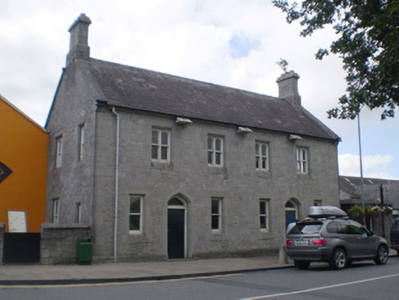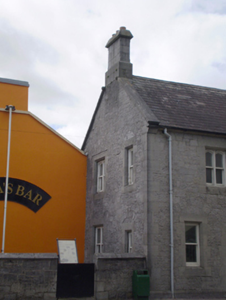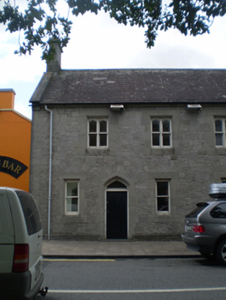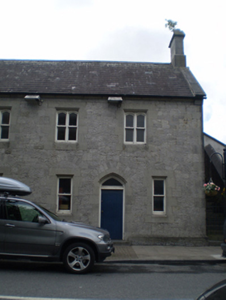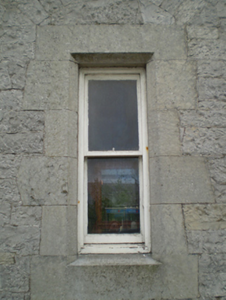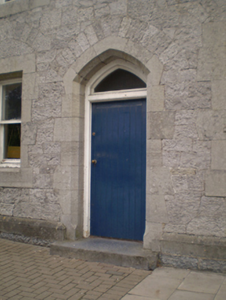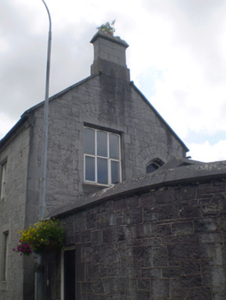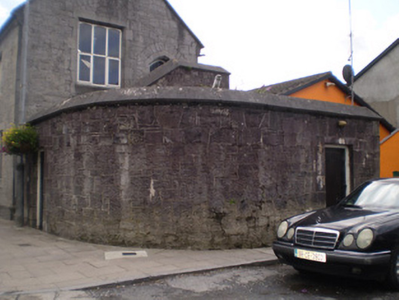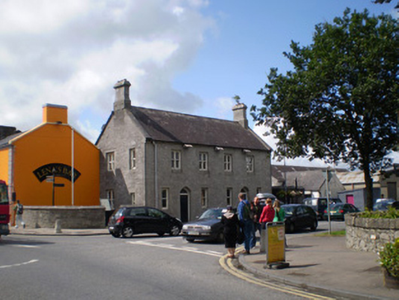Survey Data
Reg No
21824042
Rating
Regional
Categories of Special Interest
Architectural, Artistic, Social
Original Use
Court house
In Use As
Court house
Date
1860 - 1870
Coordinates
146414, 146142
Date Recorded
31/08/2008
Date Updated
--/--/--
Description
Detached six-bay two-storey courthouse, built in 1863, with cut stone external limestone staircase to north elevation. Pitched slate roof with cut limestone copings and brackets to gables and cut limestone chimneystacks and eaves course. Rubble limestone walls with cut limestone plinth and flush dressed quoins. Square-headed openings with dressed limestone block-and-start flush surrounds and timber sliding sash windows, bipartite arched one-over-one pane to first floor and one-over-one pane to ground floor. Those to ground floor with relieving arches over. Square-headed opening to north elevation with replacement window and dressed stone surround. Pointed arch openings to front (east) elevation and north elevation with dressed limestone surrounds, cut limestone steps, timber battened doors and overlights. Cut stone staircase to north with cut limestone banister wall having cut copings. Cut limestone curved boundary wall to north with cut stone copings and square-headed openings with timber battened doors.
Appraisal
William Fogerty was the architect of this courthouse, which was financed by the Earl of Dunraven. The symmetrical façade gives the appearance of a pair of houses, each with three bays and a central door. The domestic element is further underlined as it was built to accommodate a caretaker on the ground floor. The unadorned limestone construction adds a certain austerity to the façade which gives the building a civic dimension. The fine stonework adds artistic interest and is indicative of the quality of craftsmanship used in the construction. The external staircase is another notable feature as this is where the public entered the first floor court. The building and its associated boundary walls make a notable addition to the town of Adare and additional significance can be attributed to this courthouse due to its close links with local history, having been financed by the Earl of Dunraven.

